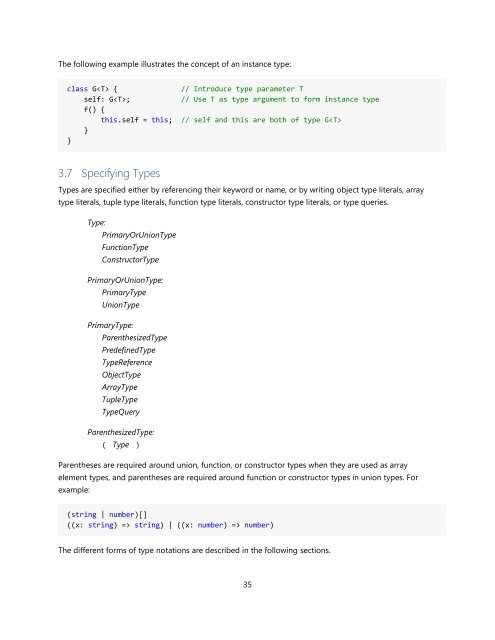TypeScript Language Specification v1.5
TypeScript Language Specification v1.5
TypeScript Language Specification v1.5
Create successful ePaper yourself
Turn your PDF publications into a flip-book with our unique Google optimized e-Paper software.
The following example illustrates the concept of an instance type:<br />
class G {<br />
// Introduce type parameter T<br />
self: G;<br />
// Use T as type argument to form instance type<br />
f() {<br />
this.self = this; // self and this are both of type G<br />
}<br />
}<br />
3.7 Specifying Types<br />
Types are specified either by referencing their keyword or name, or by writing object type literals, array<br />
type literals, tuple type literals, function type literals, constructor type literals, or type queries.<br />
Type:<br />
PrimaryOrUnionType<br />
FunctionType<br />
ConstructorType<br />
PrimaryOrUnionType:<br />
PrimaryType<br />
UnionType<br />
PrimaryType:<br />
ParenthesizedType<br />
PredefinedType<br />
TypeReference<br />
ObjectType<br />
ArrayType<br />
TupleType<br />
TypeQuery<br />
ParenthesizedType:<br />
( Type )<br />
Parentheses are required around union, function, or constructor types when they are used as array<br />
element types, and parentheses are required around function or constructor types in union types. For<br />
example:<br />
(string | number)[]<br />
((x: string) => string) | ((x: number) => number)<br />
The different forms of type notations are described in the following sections.<br />
35


















